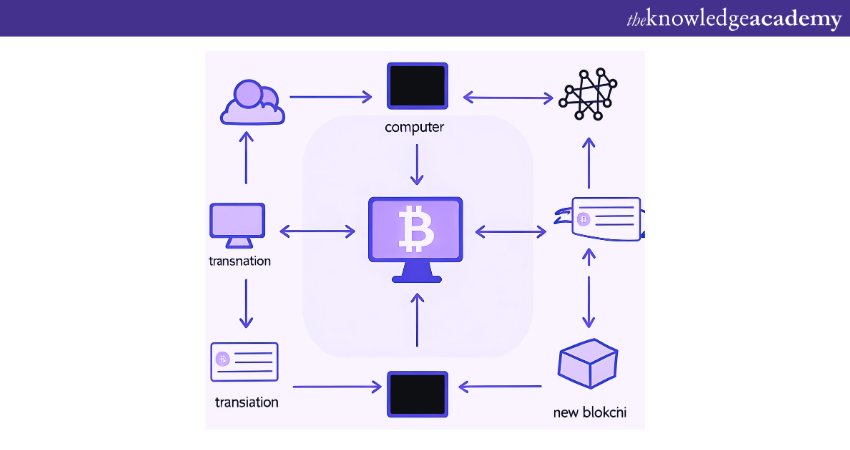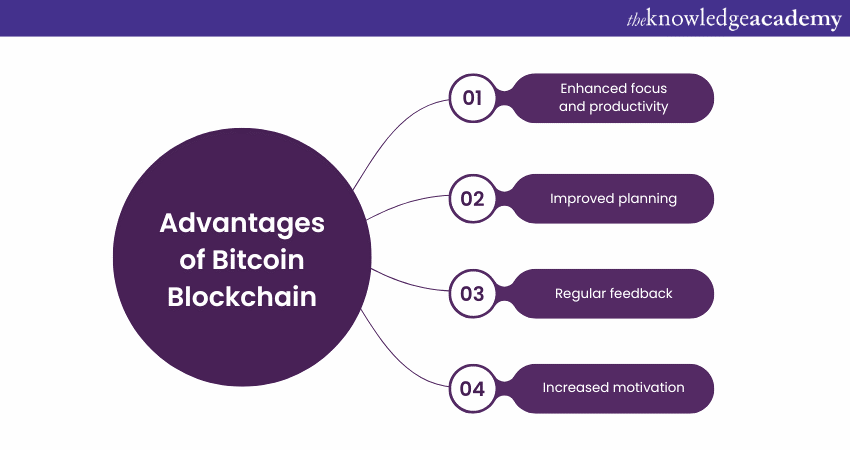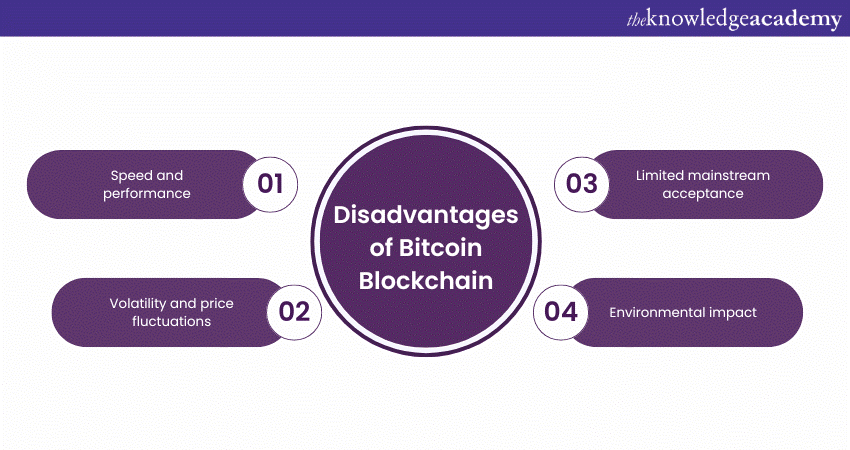We may not have the course you’re looking for. If you enquire or give us a call on +08000201623 and speak to our training experts, we may still be able to help with your training requirements.
Training Outcomes Within Your Budget!
We ensure quality, budget-alignment, and timely delivery by our expert instructors.

Have you ever wondered how Bitcoin transactions remain secure and tamper-proof in an increasingly digital world? The answer lies in the revolutionary technology known as the Bitcoin Blockchain. This innovative system ensures transparency, security, and decentralisation, making it a cornerstone of modern Cryptocurrency.
Join us as we delve into the intricacies of the Bitcoin Blockchain, exploring its components, benefits, and the challenges it faces. By understanding this groundbreaking technology, you'll gain insights into why Bitcoin continues to captivate the world. Discover how it is shaping the future of digital finance. Let’s dive in!
Table of Contents
1) Understanding Blockchain
2) What is Bitcoin?
3) How does Bitcoin Blockchain work?
4) Advantages and disadvantages of Bitcoin Blockchain
5) Use cases of Bitcoin Blockchain
6) Conclusion
Understanding Blockchain
Blockchain is an innovative system designed for secure, transparent, and tamper-resistant information recording. It operates as a distributed ledger, spreading data across multiple computers or nodes in a network.
Each transaction is stored in a block, and these blocks form a chronological chain—the “Blockchain.” Once data is added to a block, altering it becomes extremely difficult because changing one block would require modifying all subsequent blocks—a computationally impractical task.
Blockchain technology ensures transparency by allowing every network participant to access the entire ledger and verify transactions. This decentralised approach eliminates the need for a central authority or intermediary, enhancing efficiency and reducing fraud risk.
First conceptualised by Stuart Haber and W. Scott Stornetta in 1991 as a secure chain of cryptographic blocks, Blockchain technology is a groundbreaking development. It gained widespread recognition with the introduction of Bitcoin by Satoshi Nakamoto in 2008. Since then, it has transformed industries like supply chains, healthcare, and voting systems with its robust security and transparency.
What is Bitcoin?
Bitcoin is the world’s first Cryptocurrency. It allows people to directly and securely send digital money using the internet. To send digital money, BTC relies on a decentralised protocol, cryptography and a system to achieve global consensus on public ledgers updated periodically. Bitcoin’s Proof-of-Work (PoW) system is used for authenticating all transactions on a decentralised network, a Blockchain. Users who validate these transactions using their computers to solve complex mathematical problems are rewarded with Bitcoins.
According to Statista, the daily number of Bitcoin transactions has grown significantly over the years. In 2016, there were around 200,000 transactions per day, increasing to approximately 300,000 by 2020. By 2024, the average reached around 737,521 daily transactions. This steady rise reflects Bitcoin's expanding acceptance and reliance as a mainstream financial asset.
There are three main characteristics of Bitcoin:
1) Independent existence from any government or financial institutions.
2) It can be transferred to anyone in the world without involving any centralised intermediary.
3) Has a monetary policy that cannot be changed.
Sign up for our expert-led Ethereum Developer Training today and unlock your potential as an Ethereum Developer!
How does Bitcoin Blockchain work?
Bitcoin operates on a peer-to-peer network, allowing users to share and transact Bitcoin without the need for intermediaries. Here's how it works:

1) User joins the Bitcoin network:
a) A person connects their computer to the Bitcoin network, becoming part of a peer-to-peer system.
b) This network allows transactions without relying on intermediaries like banks.
2) User requests a transaction:
a) The user wants to send Bitcoin to someone else.
b) They specify the amount and the recipient’s address.
3) Transaction broadcasted to nodes:
a) The transaction request is sent out to multiple nodes (other computers in the network).
b) This ensures that everyone knows about the transaction.
4) Nodes verify the transaction:
a) Each node checks if the user has enough Bitcoin for the transaction.
b) They also verify that the transaction follows network rules.
c) Complex math problems are solved to ensure everything is legitimate.
5) Verified transactions grouped into a block:
a) Once transactions are verified, they are grouped together into a new block.
b) This block contains a batch of confirmed transactions.
6) New block added to the Blockchain:
a) The freshly created block seamlessly joins the existing Blockchain.
b) As a result, a secure chain of interconnected blocks is formed.
7) Transaction completed and recorded:
a) The completed transaction is permanently recorded on the Blockchain.
b) Its immutability ensures security and transparency in the transaction history.
Gain in-depth knowledge of Blockchain and trading Cryptocurrencies with Cryptocurrency Trading Training.
Advantages and disadvantages of Bitcoin Blockchain
Understanding these advantages and disadvantages is crucial for anyone interested in this technology. Let's explore the key points that make Bitcoin Blockchain both revolutionary and complex.
Advantages of Bitcoin Blockchain
Here are the advantages of Bitcoin Blockchain:

1) Immutability:
a) The Bitcoin Blockchain supports immutability, making it impossible to erase or replace recorded data.
b) This prevents data tampering within the network, enhancing security and trust.
2) Transparency:
a) Bitcoin’s Blockchain is decentralised, allowing any network member to verify data recorded into the Blockchain.
b) Public trust is built upon this transparency, as users can independently verify information.
3) Censorship resistance:
a) Blockchain technology operates without control from any single party, including governments.
b) No authority can interrupt the network’s operation, ensuring freedom from censorship.
4) Traceability:
a) Bitcoin’s Blockchain creates an irreversible audit trail, enabling easy tracing of changes on the network.
b) This feature enhances accountability and ensures a permanent record of transactions.
Disadvantages of Bitcoin Blockchain
Here are the disadvantages of Bitcoin Blockchain:

1) Speed and performance:
a) Blockchain is considerably slower than traditional databases due to its complex operations.
b) Transaction processing can be time-consuming, impacting scalability and efficiency.
2) Volatility and price fluctuations:
a) Bitcoin’s value is highly volatile, leading to price fluctuations.
b) Investors must consider this risk when participating in the Cryptocurrency market.
3) Limited mainstream acceptance:
a) While more people are using Bitcoin, it’s not widely accepted everywhere.
b) Using Bitcoin for everyday purchases is still a challenge.
4) Environmental impact:
a) Bitcoin mining uses a lot of energy.
b) This contributes to environmental issues, especially the carbon footprint from mining operations.
Conclusion
The Bitcoin Blockchain represents a groundbreaking technology that guarantees secure, transparent, and decentralised transactions. Recording every transaction across a network without dependence on a central authority has become a fundamental element of modern Cryptocurrency. As Bitcoin continues to captivate the world, it significantly influences digital finance and leaves an indelible impact on the global economy.
Transform your career with Blockchain expertise with our detailed Blockchain Training today!
Frequently Asked Questions

Blockchain serves as the underlying technology for Bitcoin, but the two are distinct. Blockchain is a versatile distributed ledger system used for various purposes. Bitcoin specifically leverages Blockchain to secure Cryptocurrency transactions.

The current size of the entire Bitcoin Blockchain is approximately 562.83 GB as per Statista. It has grown significantly over time, reflecting its expanding acceptance and reliance as a mainstream financial asset.

The Knowledge Academy takes global learning to new heights, offering over 30,000 online courses across 490+ locations in 220 countries. This expansive reach ensures accessibility and convenience for learners worldwide.
Alongside our diverse Online Course Catalogue, encompassing 17 major categories, we go the extra mile by providing a plethora of free educational Online Resources like News updates, Blogs, videos, webinars, and interview questions. Tailoring learning experiences further, professionals can maximise value with customisable Course Bundles of TKA.

The Knowledge Academy’s Knowledge Pass, a prepaid voucher, adds another layer of flexibility, allowing course bookings over a 12-month period. Join us on a journey where education knows no bounds.

The Knowledge Academy offers various Blockchain Training, including Bitcoin and Cryptocurrency Course, Blockchain Training Course and Ethereum Developer Training. These courses cater to different skill levels, providing comprehensive insights into Bitcoin Mining.
Our Advanced Technology Blogs cover a range of topics related to Blockchain, offering valuable resources, best practices, and industry insights. Whether you are a beginner or looking to advance your Blockchain skills, The Knowledge Academy's diverse courses and informative blogs have you covered.
Upcoming Programming & DevOps Resources Batches & Dates
Date
 Blockchain Training Course
Blockchain Training Course
Thu 23rd Jan 2025
Thu 27th Mar 2025
Thu 15th May 2025
Thu 17th Jul 2025
Thu 25th Sep 2025
Thu 13th Nov 2025







 Top Rated Course
Top Rated Course



 If you wish to make any changes to your course, please
If you wish to make any changes to your course, please


